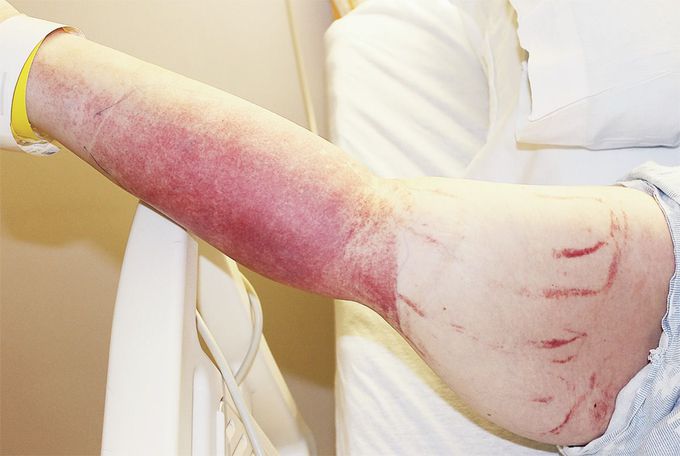


Rumpel–Leede Sign
A 47-year-old woman with a history of abdominal surgery presented with syncope and acute gastrointestinal bleeding. She went to the hospital, and while she was undergoing continuous blood-pressure monitoring, a petechial rash with a well-demarcated upper margin was noted on each arm distal to the sphygmomanometer cuff. Continuous blood-pressure monitoring was immediately stopped, and after a period of 6 days, the rashes had resolved. The formation of petechiae distal to a tourniquet or sphygmomanometer on release of pressure is known as the Rumpel–Leede sign. This sign was reported in 1909 by Theodor Rumpel, and again independently in 1911 by Carl Stockbridge Leede. While treating patients with scarlet fever, they both noted petechiae on the arms of patients distal to the part of the arm where a tourniquet had been applied. Historically, the tourniquet test (or Rumpel–Leede Capillary-Fragility Test) was used to assess patients for thrombocytopenia and capillary fragility. Today, the Rumpel–Leede sign may be observed iatrogenically in the context of continuous blood-pressure monitoring, particularly in patients with bleeding diatheses. In this patient, the Rumpel–Leede sign was attributed to continuous monitoring with the use of sphygmomanometer cuffs that were too small, rather than to coagulopathy.

